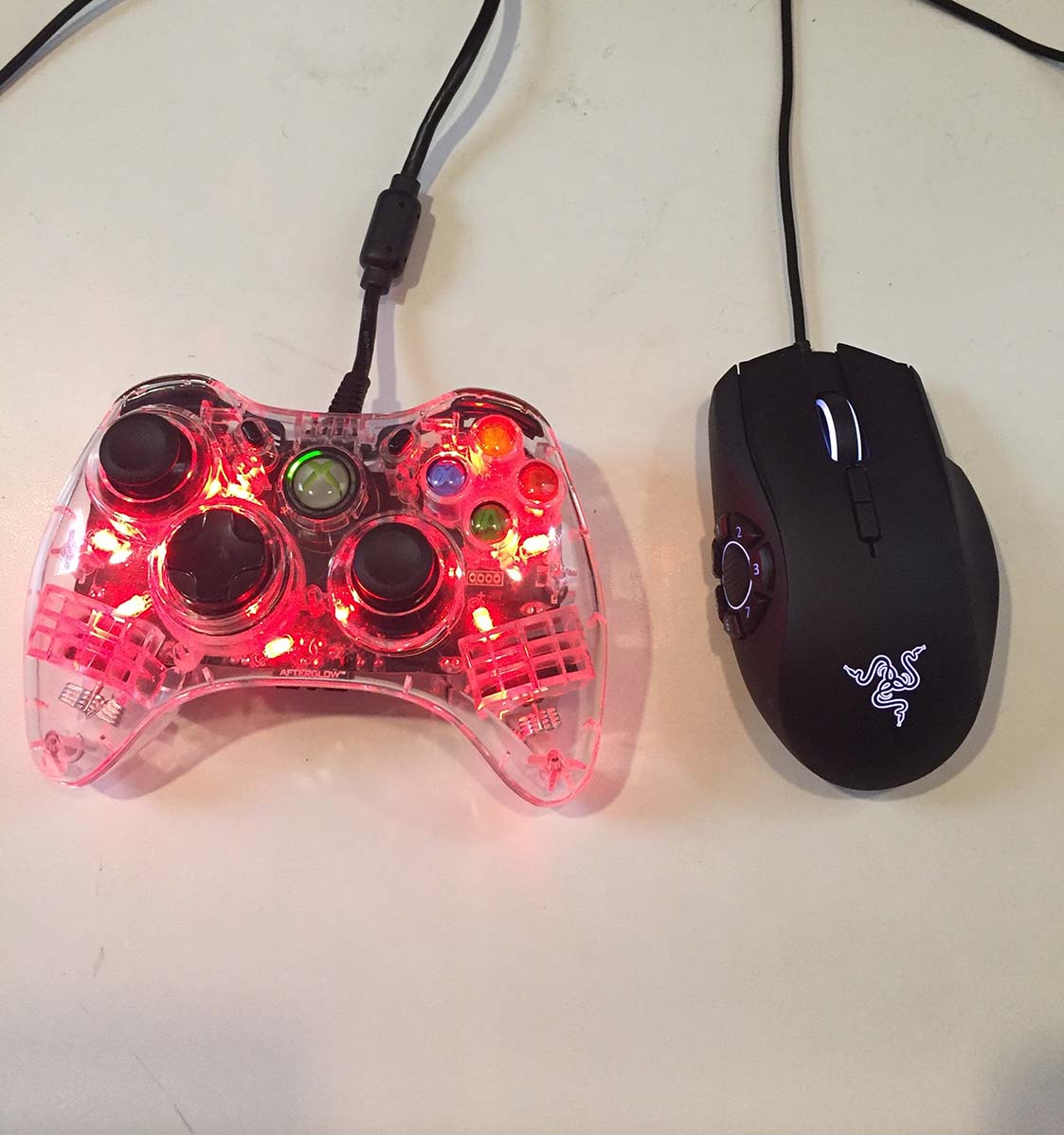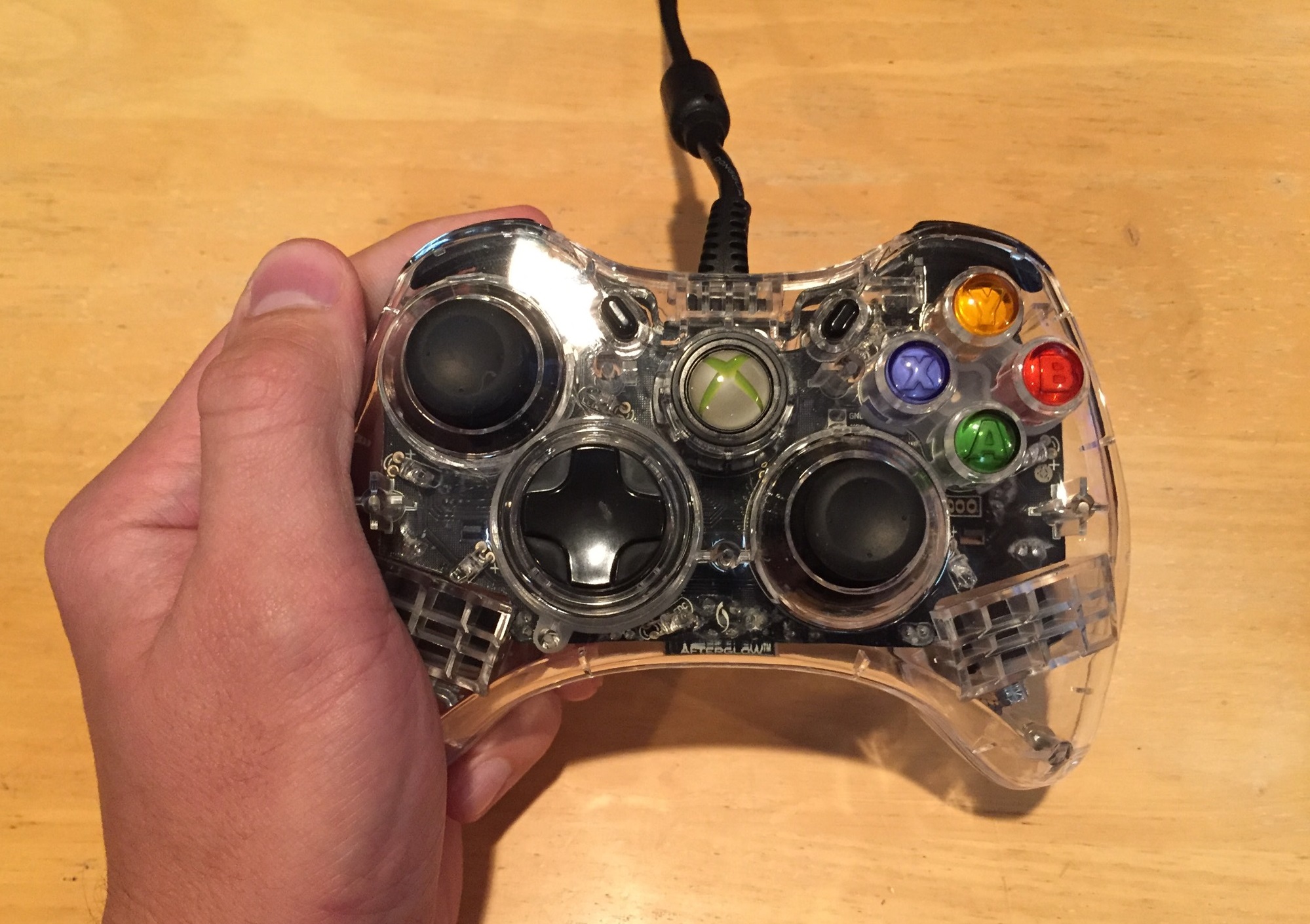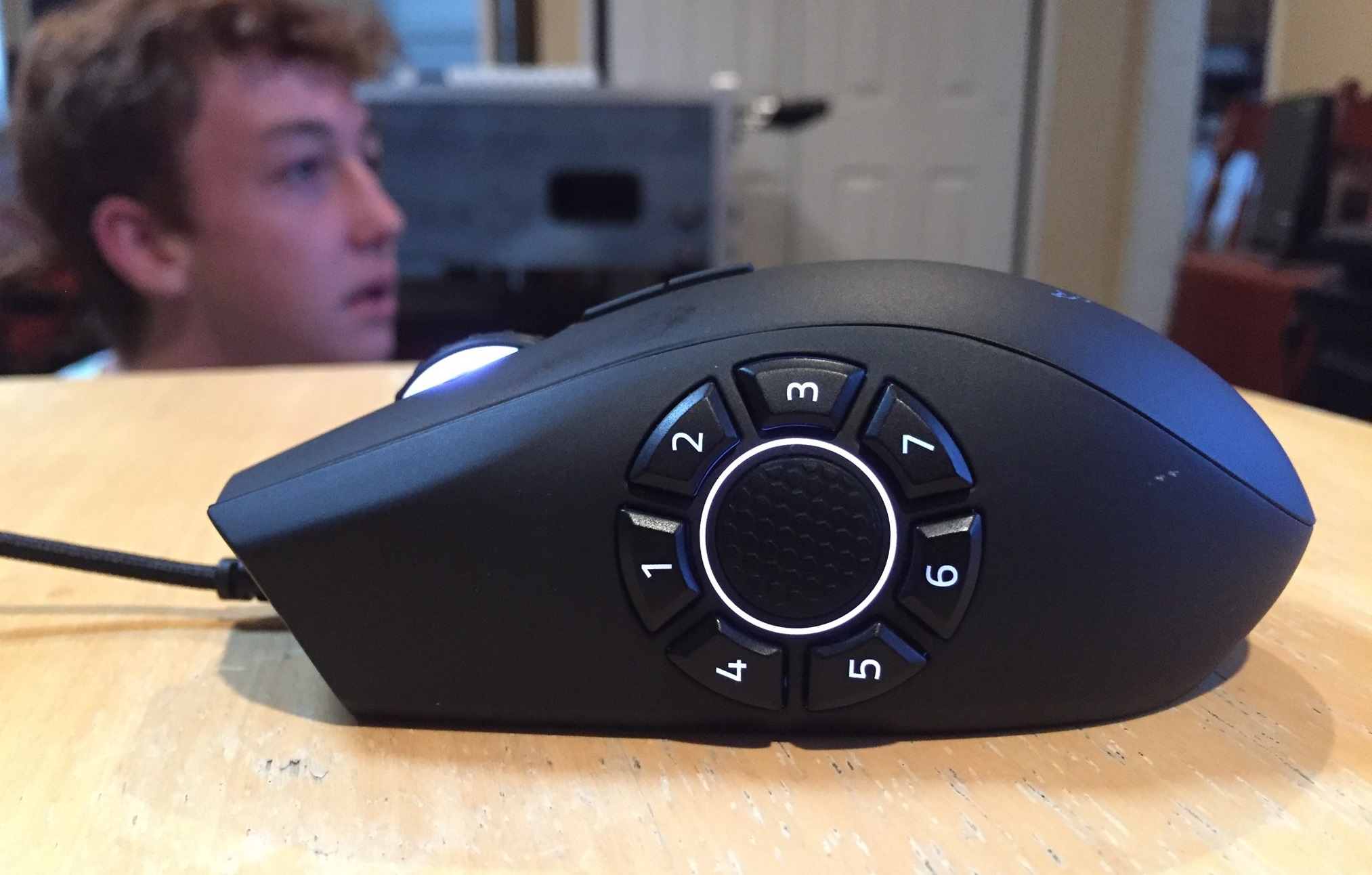Experiments In Alternative Video Game Controls

W hen it comes to playing video games, there are two common types of controller setups: console controller or keyboard and mouse. Growing up I became pretty familiar with both: I would use mouse and keyboard for games like Space Invaders X and a gamecube controller for games like Super Smash Bros Melee. In my later years I started learning that some types of games are much better played with certain types of controls. Apparently, for example, mouse and keyboard players had such a great advantage over controller players in Overwatch that Blizzard decided to keep console players from facing off against PC players in online matches.
Though I found these sorts of ideas interesting when I first heard them, I never seriously considered alternate methods of controls until I started thinking of the video game that I would make if I were given tons of money and creative control over a huge project. If I were to be in charge of a huge AAA video game project, it would definitely be a z-targeting type of game. One thing which I never cared for in any z-targeting game from Zelda Windwaker to Dark Souls is how difficult it can be to accurately select a target in combat, especially when there are multiple enemies. I am sure that anyone who fought against the Deacons of the Deep in Dark Souls 3 can sympathize with the desire to have z-targeting gameplay with a more accurate means of selecting distinct targets.
Controller and Mouse
Eventually, it occurred to me that using a mouse and keyboard may solve the problem of accurately selecting targets rather handily: after all, a mouse would be a great tool for easily getting a cursor over targets to select them for combat. After talking with friends who were masterful at z-targeting games I was informed that, even though a mouse could be useful for selecting targets, the drawback of having to use WASD for movement well out weighed the benefits. Most players seem to play z-targeting games with controllers since few buttons are required and movement with a joystick is more comfortable.
Weighing the pros and cons of these control methods against each other was rather frustrating until it occurred to me that, perhaps, a video game could accomodate the use of a joystick and other buttons for the left hand, while also allowing for the use of a mouse for accurate selecting in the right hand. As soon as this occurred to me, I decided to test out hybrid controls in general.

Getting a controller to work on my computer was surprisingly annoying at first. Since I have never owned an Xbox console, I first tried connecting a PS3 controller to my computer. I wouldn't recommend this to anyone. Connecting a PS3 controller to a PC will require installing a driver. There is no official driver for this purpose and the three or four alternatives are sketchy, frustratingly obtuse, and not guaranteed to work. After attempting to connect my PS3 controller with three different drivers — anyone of which might have been terrible for my computer — I finally gave up and purchased an Xbox 360 controller.
Purchasing the Xbox 360 controller was also nerve wracking at first. I was afraid that a non-Microsoft brand Xbox 360 controller would also require fiddling to get it to work on the computer. If you don't have a lot of money to spend, buying a Microsoft brand, wired Xbox 360 controller is just as big a nightmare as getting a PS3 controller to work. Eventually I learned that even non-Microsoft brand Xbox 360 controllers are usually plug'n'play. Eventually I decided on an Afterglow, wired Xbox 360 controller — red of course. After thirty dollars and a day of waiting, I had my controller. To my relief it was plug'n'play. I'm prepared to recommend the controller for anyone who is interested in playing PC games with a controller. Aside from its obnoxious glow, this controller does anything a conventional gamer could ask for. Unfortunately, I didn't have conventional gaming in mind.
Overwatch and Hybrid Controls
The first thing I did with the Xbox 360 controller was try out some Cuphead. After a brief adjustment period I was elated to discover that the Xbox 360 controller was perfect for platforming: far superior in my opinion to mouse and keyboard. This wasn't hybrid controls however. Eventually, I decided to try Overwatch with a controller in one hand and a mouse in the other.

Overwatch was certainly not made with hybrid controls in mind. When the player uses both a controller and keyboard, a glitch occurs where the GUI glitchily switches between displaying images of keys and images of controller buttons. It can be quite disconcerting at first and I have yet to find a fix for it. I also had to disable chat, because playing with hybrid controls also caused the chat text to jump up and down at random as if it had no idea where to be. Finally, an issue for other perspective players, if you aren't using a mouse like the one I chanced to be using — the Naga Hex V2 — you will probably have a problem going to the escape menu while in game. The button for the escape menu cannot be reassigned. On the controller, this button is near the right side of the controller. This means that changing an option in game would require either taking one's hand off of the mouse to hit the button on the controller or going to the keyboard and hitting escape, neither of which are optimal. Luckily, playing with the Naga Hex V2 meant that I could assign escape to a button like "7" on the mouse, meaning that this last issue wasn't an issue for long.
One damning problem with hybrid controls is that, if it weren't for my special mouse, I would have lost a lot of functionality
in play. Though a joystick in the left hand is rather comfortable, this setup means that the other fingers
can only comfortably and reliably utilize two other buttons in that hand: the bumper and the trigger.
The D-pad can still be used but only for functions which don't require character movement since using
the D-pad requires taking one's thumb off of the joystick. This meant that the mouse had to compensate
for quite a bit. Thanks to the Naga's many buttons, I was able to include all the missing controls.
Left Hand (Xbox 360 controller):
Joystick - regular movement
Bumper - ultimate ability
Trigger - secondary ability
D-Pad -
Up - spray sticker
Left - disable chat (which I only needed because of
hybrid controls anyway)
Down - change hero
Right Hand (Naga Hex V2):
Left Click - primary fire
Right CLick - secondary fire
Scroll Wheel Down - "Hello!"
Scroll Wheel Up - "Thanks!"
1 - tertiary ability
2 - "Group up!"
3 - check tab menu
4 - jump
5 - sticker wheel
6 - voiceline wheel
7 - escape menu
Though this setup had some advantages in Overwatch, most of the advantages came from remapping functions which were on the keyboard to the mouse. Jumping, thanking players, and using voice lines were all made more intuitive by the use of the Naga's extra side buttons. In terms of overall gameplay however, using hybrid controls seemed to be somewhat disadvantageous. I never seemed to have a good match with hybrid controls.
Hybrid Control Troubles
Though many functions became more intuitive with the use of extra mouse buttons, some, such as the tertiary ability, became harder to distinguish from the others. Though I never misclicked the tertiary ability, there was often a slight delay in pressing the button because I wanted to be sure that I pressed the right button before committing to using it. Another problem was with the Naga Hex V2 itself. Though it has a number of incredible features, it's not the kind of mouse I use for normal play. Usually I play with a simple mouse. I prefer my simple mouse in intense gameplay because the Naga has a shelf for the ring finger on its right side which can be rather awkward for my pinky. When I finally returned to using my normal mouse, I prefered the size of my other mouse but was happy that the finger shelf was gone.
However, the most damning thing of all for the hybrid controls was holding an Xbox 360 controller with just one hand. Inevitably this always made my hand ache in a way that it usually didn't when using a keyboard. This was a huge blow to the validity of hybrid controls considering that the whole point for using the controller in the left hand was supposed to be for better game feel. The Xbox 360 controller was not designed to be held in one hand. Even after propping the controller on different things, my hand still managed to ache after enough sessions of Overwatch.
Conclusion
When I finally reverted back to the normal keyboard and mouse controls, playing felt much better and I also felt as though the quality of my play had improved. Though it's possible that my play actually did improve with the hybrid system or that I just didn't use the hybrid controls long enough to fully adjust to them, I'm rather thoroughly convinced that the Xbox 360 and mouse setup is not for me when it comes to FPSs. This however, will not be the end of my experiments with hybrid controls. I still think that the use of a joystick in the left hand may have potential to work very well in conjunction with using a mouse in the right hand. To deal with the hand ache which comes from holding an Xbox 360 controller in one hand, in my next attempt I will try complementing the mouse with a Wii nunchuck for the left hand. I expect that, since the Wii nunchuck was designed for one handed use, that it will probably feel much more comfortable than one half of an Xbox 360 controller. Though using a Wii nunchuck will probably involve more fiddling with drivers, I would prefer not to have to pay for something like a FragChuck. Finally, this experiment with hybrid controls has still not answered my initial inquiry about the advantage of mouse and controller in the context of z-targeting gameplay. I look forward testing the hybrid setup on a game like Dark Souls very soon.



